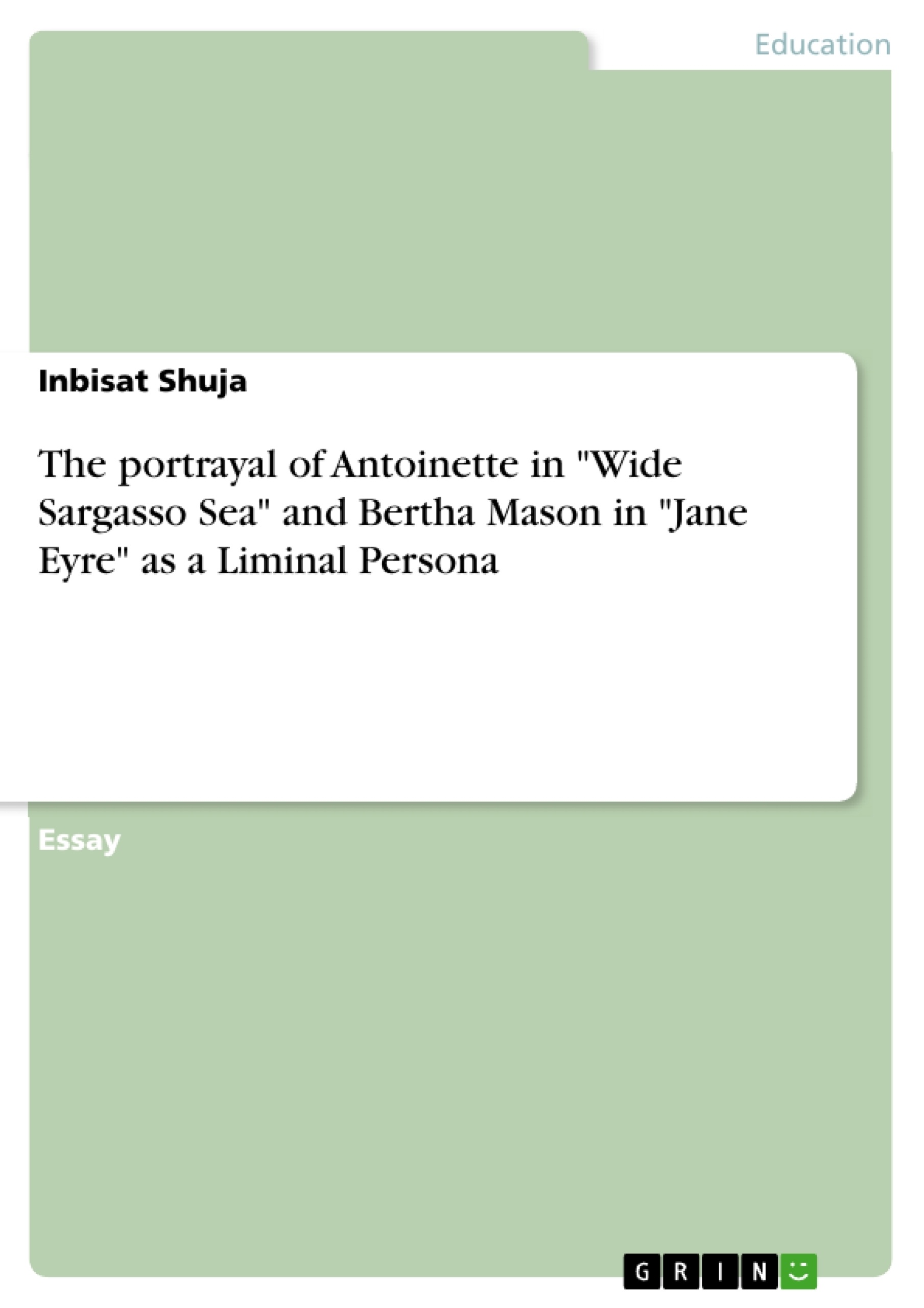This paper analyses the liminal existence of Antoinette in Jean Rhys’ "Wide Sargasso Sea" and Bertha Mason in Charlotte Bronte’s "Jane Eyre". The paper analyses the condition of the characters, especially the creole heiress in both of these novels, under the light of Victor Turner’s theory of Liminality. In doing so, it aims to highlight the importance of a sense of belonging and a foothold in shaping a person’s identity and sanity.
Inhaltsverzeichnis (Table of Contents)
- The portrayal of Antoinette in Jean Rhys' Wide Sargasso Sea and Bertha Mason in Charlotte Bronte's Jane Eyre as a Liminal persona
- Liminality as a Theoretical Framework
- The Liminal Existence of Antoinette in Wide Sargasso Sea
- Attributes of Liminality in Antoinette
- Liminality as a Threshold State
- Creating a New Identity in Liminality
Zielsetzung und Themenschwerpunkte (Objectives and Key Themes)
This paper examines the liminal existence of Antoinette in Jean Rhys' Wide Sargasso Sea and Bertha Mason in Charlotte Bronte's Jane Eyre through the lens of Victor Turner's theory of liminality. It aims to demonstrate the significance of belonging and identity in shaping a person's sanity and sense of self.
- The concept of liminality and its application to literary characters.
- The portrayal of Antoinette and Bertha as liminal figures in the novels.
- The connection between liminality, identity, and sanity.
- The influence of colonialism and social structures on the characters' liminal experiences.
- The role of power dynamics and societal expectations in shaping the characters' fates.
Zusammenfassung der Kapitel (Chapter Summaries)
- The paper begins by introducing the concept of liminality, drawing on Victor Turner's work and its relevance to the characters of Antoinette and Bertha.
- The chapter then delves into the liminal existence of Antoinette in Wide Sargasso Sea, exploring her childhood experiences, her marriage, and her eventual descent into madness.
- The paper then examines various attributes of liminality as outlined by Turner, such as invisibility, silence, and submissiveness, and applies them to Antoinette's character, highlighting her subjugation and loss of agency.
- The chapter further explores the connection between liminality and surrealism, analyzing Antoinette's dreamlike experiences and her blurring of reality and fantasy.
- The paper concludes by discussing the concept of creating a new identity within liminality, highlighting how Antoinette's madness allows her to shed her former self and construct a new identity, albeit a fractured one.
Schlüsselwörter (Keywords)
This paper focuses on key terms and concepts such as liminality, identity, sanity, colonialism, societal structures, power dynamics, and the novels Wide Sargasso Sea and Jane Eyre.
- Quote paper
- Inbisat Shuja (Author), 2017, The portrayal of Antoinette in "Wide Sargasso Sea" and Bertha Mason in "Jane Eyre" as a Liminal Persona, Munich, GRIN Verlag, https://www.grin.com/document/366398



